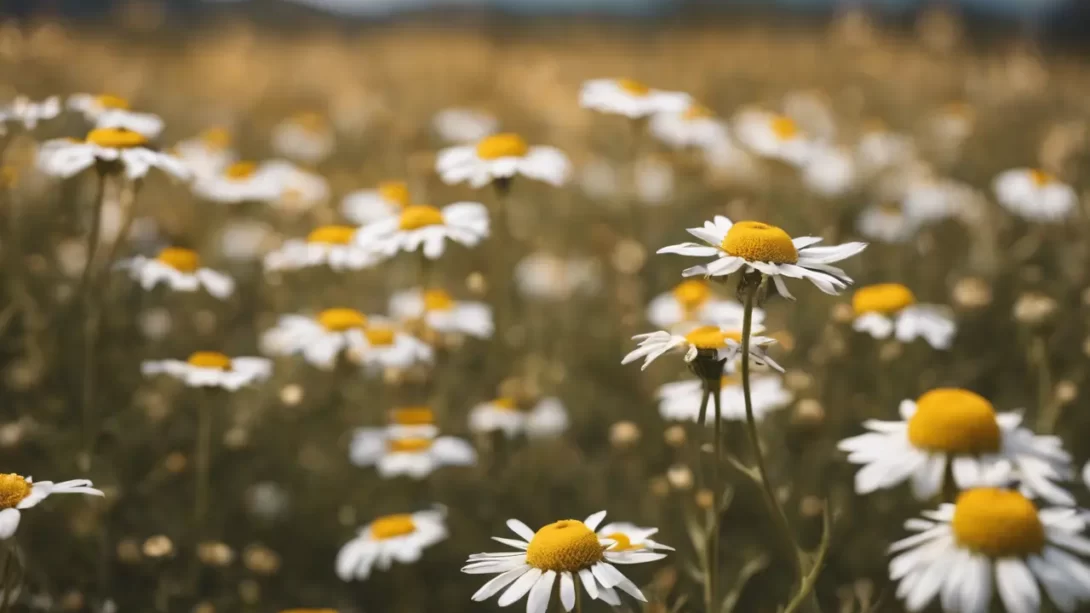Chamomile, known for its soothing aroma and therapeutic properties, is a staple in herbal teas, aromatherapy, and natural remedies. The key to unlocking its full potential lies in proper drying, which preserves its delicate aroma and medicinal qualities. This article provides a comprehensive guide on how to effectively dry chamomile, ensuring you can enjoy its benefits long after harvest.
Identifying and Harvesting Chamomile
To begin, it’s essential to correctly identify chamomile. The two most common varieties are Matricaria chamomilla (German chamomile) and Chamaemelum nobile (Roman chamomile). German chamomile is an annual with small, daisy-like flowers, while Roman chamomile is a perennial ground cover with larger blossoms. Harvesting should be done when the flowers are fully open, typically in late spring or early summer. The best time to harvest is in the morning after the dew has evaporated but before the sun is too high. Gently snip the flower heads off the stem, leaving a short stem attached.
Preparing Chamomile for Drying
After harvesting, preparation is crucial. Start by gently cleaning the chamomile flowers. This can be done by lightly shaking them to dislodge any dirt or insects. Avoid washing them with water, as this can diminish their aromatic oils. Then, carefully remove the flowers from the stems, as the stems can take longer to dry and may lead to uneven drying of the flowers.
Choosing a Drying Method
Selecting the right drying method is essential for preserving the quality of chamomile. The three most common methods are air drying, oven drying, and using a dehydrator. Air drying is the most traditional method, ideal for preserving the delicate oils and flavors. Oven drying is faster but requires careful monitoring to prevent overheating. A dehydrator offers the most control over temperature and is excellent for humid climates.
Air Drying Chamomile
Air drying chamomile is simple and effective. Choose a warm, dry, and well-ventilated area, away from direct sunlight. Spread the chamomile flowers out on a clean, dry surface, like a mesh screen or a piece of cheesecloth. Ensure the flowers are in a single layer to allow even air circulation. You can also tie the stems and hang the chamomile bunches upside down. The drying process typically takes 1-2 weeks, depending on humidity levels. The flowers are ready when they feel dry to the touch and the petals crumble easily.
Oven Drying Chamomile
For a quicker method, oven drying is a viable option. Preheat your oven to the lowest setting, usually between 95-115°F (35-46°C). Spread the chamomile flowers on a baking sheet lined with parchment paper in a single layer. Place the tray in the oven, leaving the door slightly ajar to allow moisture to escape. Check the chamomile every 15-30 minutes to prevent burning. This process can take anywhere from 1-4 hours, depending on the oven and the moisture content of the flowers.
Using a Dehydrator to Dry Chamomile
A dehydrator is especially useful for drying chamomile in humid conditions. Set your dehydrator to a low setting, around 95°F to 115°F (35°C to 46°C), to preserve the essential oils and fragrance of the flowers. Place the chamomile in a single layer on the dehydrator trays. The drying process typically takes between 1-4 hours, but it’s important to check regularly. The chamomile is sufficiently dried when the petals are crisp to the touch and the center (receptacle) is firm and dry.
Storing Dried Chamomile
Proper storage is crucial for maintaining the quality of your dried chamomile. Store the dried flowers in an airtight container, preferably made of dark glass or opaque material to protect them from light. Keep the container in a cool, dry place away from direct sunlight and moisture. Properly stored dried chamomile can retain its quality for up to a year. Remember, the fresher your dried chamomile, the more potent its flavor and medicinal properties.
Conclusion
Drying chamomile is a rewarding process that allows you to enjoy this versatile herb throughout the year. Whether you choose to air dry, oven dry, or use a dehydrator, each method offers its own benefits. Experiment with these techniques to find the one that best suits your needs and preferences. With properly dried chamomile, you can relish in its soothing aroma and healthful benefits whenever you wish.



